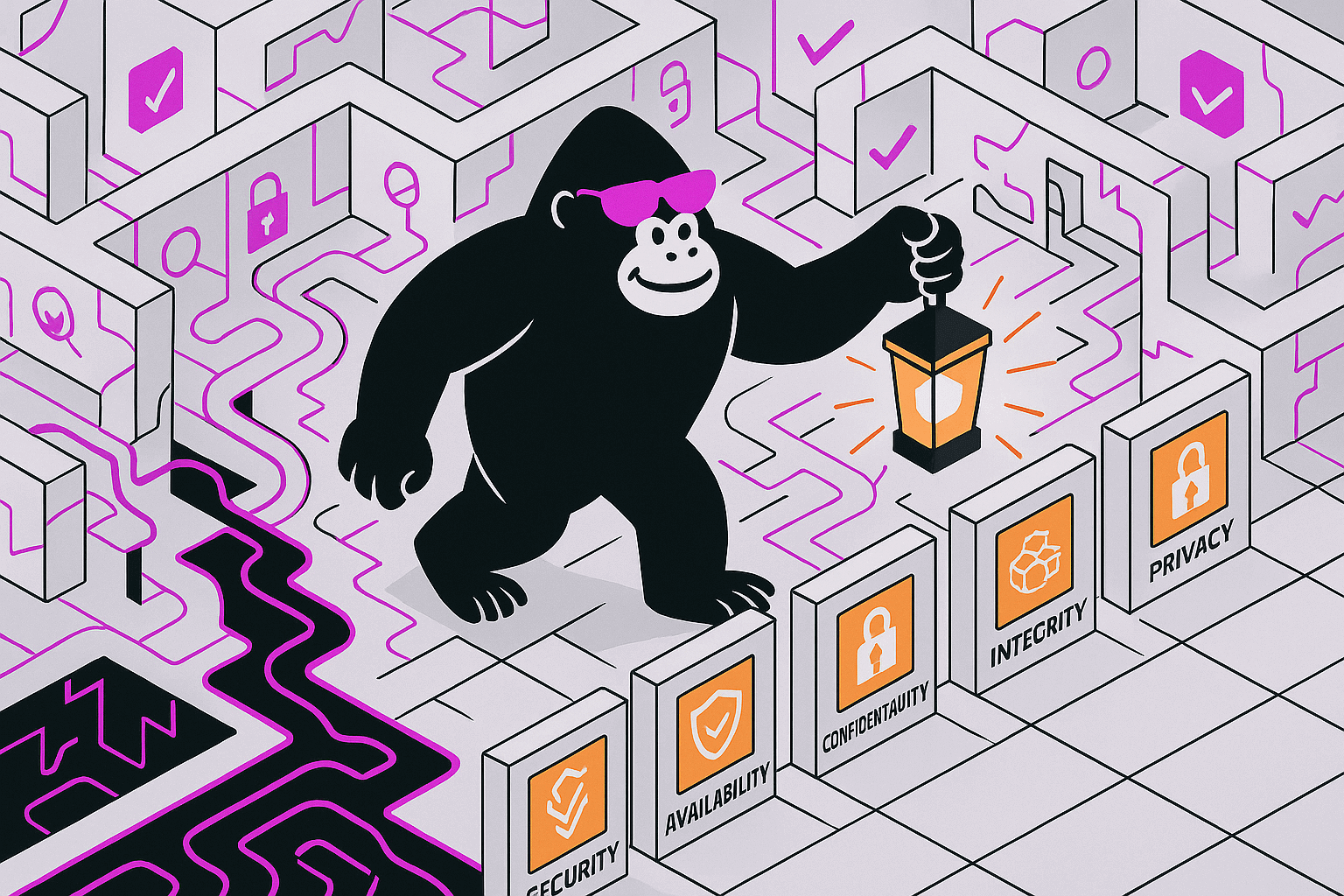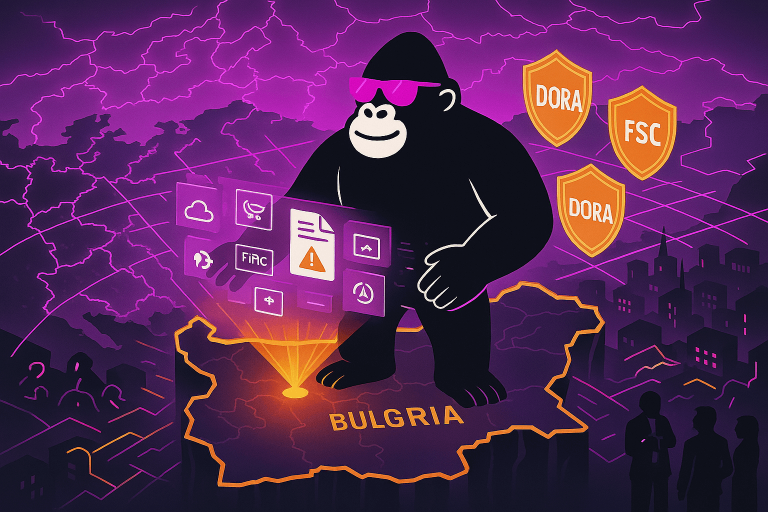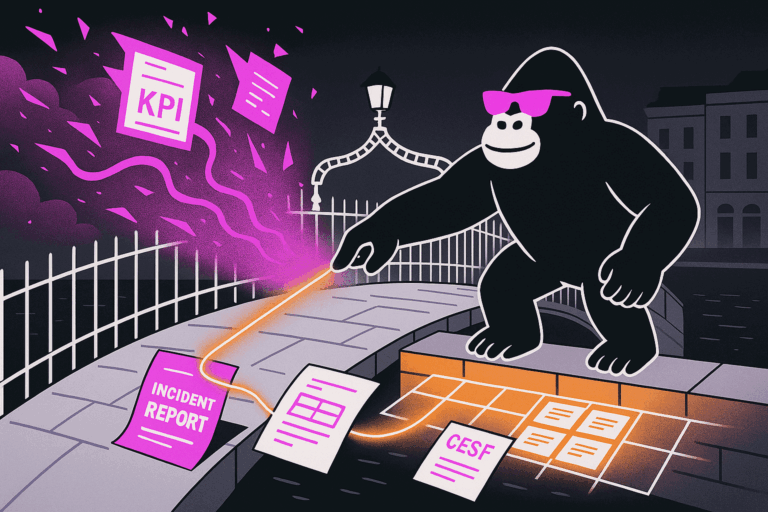Imagine trying to explain cybersecurity controls without sounding like you’ve been possessed by a compliance handbook—awkward, right? Yet every organization that processes customer data needs to demystify this labyrinth.
In this article, I’ll walk you through SOC 2 reporting—the what, why, and how—so you can see beyond the acronyms and actually feel confident that your service organization’s controls stand up to scrutiny. We’ll cover the report’s purpose, the types of attestations you can get, the standards behind the scenes, and the nuts and bolts of a SOC 2 report structure. By the end, you’ll know exactly which boxes to tick, why they matter, and how to speak about SOC 2 without breaking into a cold sweat.
What is a SOC 2 report?
SOC 2 (System and Organization Controls 2) reports are the industry’s gold standard for attesting that a service organization has put proper controls in place around customer data. Think of it as an auditor’s magnifying glass over your security, availability, processing integrity, confidentiality, and privacy practices. Instead of just taking your word for it, SOC 2 provides stakeholders with independent assurance that your controls actually work and align to the Trust Services Criteria defined by the American Institute of CPAs (AICPA) and Chartered Institute of Management Accountants (CIMA).
PRO TIP
Draft a one-page summary of your SOC 2 scope and criteria selections. Circulate it to stakeholders (sales, legal, operations) so everyone speaks the same language when “SOC 2” comes up in client conversations.
Purpose and scope of a SOC 2 examination
A SOC 2 examination evaluates controls at a service organization “relevant to security, availability, processing integrity, confidentiality, or privacy of the systems the service organization uses to process users’ data.”
In plain English, that means auditors verify whether your infrastructure and processes meet the commitments you’ve made to clients or regulators (AICPA & CIMA). It’s not a one-size-fits-all checklist—you select which criteria apply based on contractual obligations or risk appetite, and the report scopes only those control areas.
Types of SOC 2 reports
When you order a SOC 2 engagement, you’ll choose between two flavors:
- Type 1: An opinion on the design and implementation of controls as of a specific date. It’s like a snapshot showing your control picture on Day X.
- Type 2: An opinion on both design and operating effectiveness of controls over a continuous period (usually 6–12 months). Here, auditors test whether your controls not only exist but also work reliably over time.
PRO TIP
If you start with a Type 1 report, plan a Type 2 pilot by earmarking controls to test monthly. That way, when you’re ready for Type 2, you already have 3–6 months of evidence in the bank.
Reporting standards and criteria
Rather than inventing new rules, SOC 2 piggybacks on established AICPA standards. If you’ve tangled with SSAE 18 (Statement on Standards for Attestation Engagements No. 18), you’re halfway home already.
SSAE 18 and AT-C Sections
Issued by the AICPA, SSAE 18 codifies how auditors should conduct and report on attestation engagements. Within SSAE 18, AT-C sections lay out the requirements for testing controls at service organizations. In short, this framework ensures your auditor follows consistent, rigorous procedures before issuing an opinion.
Trust Services Criteria (TSC)
The core of SOC 2 is the Trust Services Criteria, defined in AICPA’s Trust Services Principles and Criteria (TSP) Section 100 (2017). There are five broad categories you can select from, each with “points of focus” that dive into specifics. In 2022, the AICPA refreshed these points of focus to address emerging threats like supply-chain risks and advanced persistent threats (EY).
| Criteria | Description | Mandatory? |
| Security (Common) | Protection of system resources against unauthorized access (both physical and logical). | Yes |
| Availability | Accessibility of the system as committed or agreed upon with users. | Optional |
| Processing Integrity | Assurance that system processing is complete, valid, timely, and authorized. | Optional |
| Confidentiality | Protection of information designated as confidential per agreements. | Optional |
| Privacy | Collection, use, retention, disclosure, and disposal of personal information in line with privacy notice. | Optional |
PRO TIP
Assign a control owner to each TSC pillar and include their name and contact info beside the table. When auditors have questions, you can point them to a single SME instead of corralling multiple teams.
Core components of a SOC 2 report
A SOC 2 report isn’t just a dry spreadsheet of test results. It tells a story about your environment—from theory to practice. Here’s what you’ll find in a typical SOC 2 report:
Independent service auditor’s report
This is where the auditor drops their opinion, details the scope (Type 1 or Type 2), and explains the basis for their examination. Consider the headline: “We looked at controls X, Y, and Z, and here’s what we think.”
Management’s assertion
Before the auditor chimes in, management must assert that the system description is fair and the controls align with selected TSC. It’s management raising its hand and saying, “Yep, this is all accurate.”
Description of the system
Auditors need context. This section covers system boundaries, infrastructure, software, people, procedures, and data flows. It maps to “Description Criteria” benchmarks in AICPA TSP: what you must tell users about your environment and controls (AICPA & CIMA).
Trust Services Criteria and control mapping
You’ll see a matrix showing which TSC categories were in scope and which specific controls address each criterion. Often, auditors use illustrative controls from AICPA guidance to align with your environment (Cyber Sierra).
Tests of controls and results
For Type 2 only: Here’s the proof in the pudding. Auditors detail their procedures—inquiry, observation, inspection, re-performance—and report exception rates. If an exception pops up, you know exactly where the controls slipped.
Complementary user-entity controls
Not everything lives in your backyard. Some controls you “expect” your clients to have—like secure user passwords or two-factor authentication on their end. This section spells out those client-side requirements.
Other information (optional)
Need to include an organizational chart, details on subservice providers, or a log of major system changes? This optional section is your chance to add color.
PRO TIP
Publish a brief client-facing summary of their responsibilities (e.g. password rules, MFA). Embedding it in onboarding materials prevents client-side control gaps from becoming audit findings.
Navigating your SOC 2 journey
I’ve seen organizations treat SOC 2 like a checkbox exercise—only to discover gaps when the auditor calls them out. Instead, lean into it as a partnership:
- Tailor your scope: Choose criteria that align to SLAs, regulations, or customer promises.
- Document everything: The auditor will ask for policies, procedures, and evidence. A robust documentation library is your best friend.
- Test early and often: Run internal control tests quarterly to catch hiccups before the audit.
- Engage stakeholders: Bring IT, ops, legal, and executive sponsors into the plan. SOC 2 isn’t just an IT project—it’s an organizational commitment.
PRO TIP
Hold quarterly “SOC 2 control clinics” with representatives from IT, legal, and operations to review upcoming changes (new services, policy updates). Proactive alignment keeps your controls fresh and audit-ready.
Driving continuous improvement
SOC 2 isn’t a “set it and forget it” deal. The controls you implement today need to evolve alongside emerging threats, technology shifts, and changes in your business model. Annual Type 2 examinations keep you honest and force you to refine processes. Plus, those 2022 points-of-focus updates remind us that attackers never stand still.
Streamline your SOC 2 compliance with CyberUpgrade
SOC 2 compliance demands airtight controls, clear evidence, and proof that your security measures truly work under scrutiny. CyberUpgrade offers predefined, customizable workflows aligned with Trust Services Criteria that automate tasks like background checks, access reviews, and incident logging. Real-time Slack and Teams prompts guide your team through every step, slashing manual effort by up to 80% and ensuring no control gets overlooked.
All compliance evidence—from vulnerability scans to MFA logs—is centralized in an audit-ready repository, making it easy to satisfy both ongoing monitoring and “separate evaluation” requirements under CC 4.1 and CC 7.1. Built-in risk assessments, pen-testing integrations, and continuous monitoring shore up your defenses, while our fractional CISO service provides expert guidance and strategic leadership.
With CyberUpgrade, you’ll not only meet today’s SOC 2 standards but build a scalable, future-proof compliance program—so audits become confirmation, not chaos.
Looking ahead: Where does SOC 2 go next?
As cloud services, AI, and microservices architectures grow more complex, SOC 2 will need to stretch its criteria. Expect more focus on third-party risk (supply-chain dependencies), AI model integrity, and zero-trust principles. Organizations that start mapping these emerging areas now will breeze through future audits.
By anchoring your SOC 2 strategy in robust documentation, targeted control design, and ongoing self-assessment, you’ll deliver greater transparency to stakeholders and build a security posture that scales. And that’s the real headline: compliance that fuels trust—without the compliance headache.









